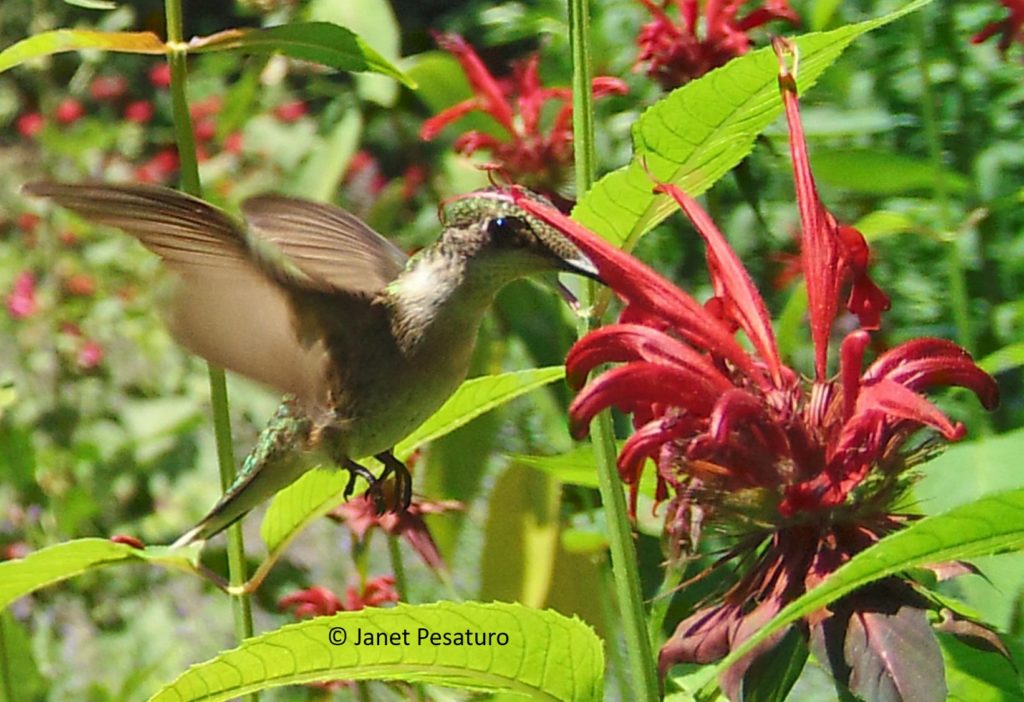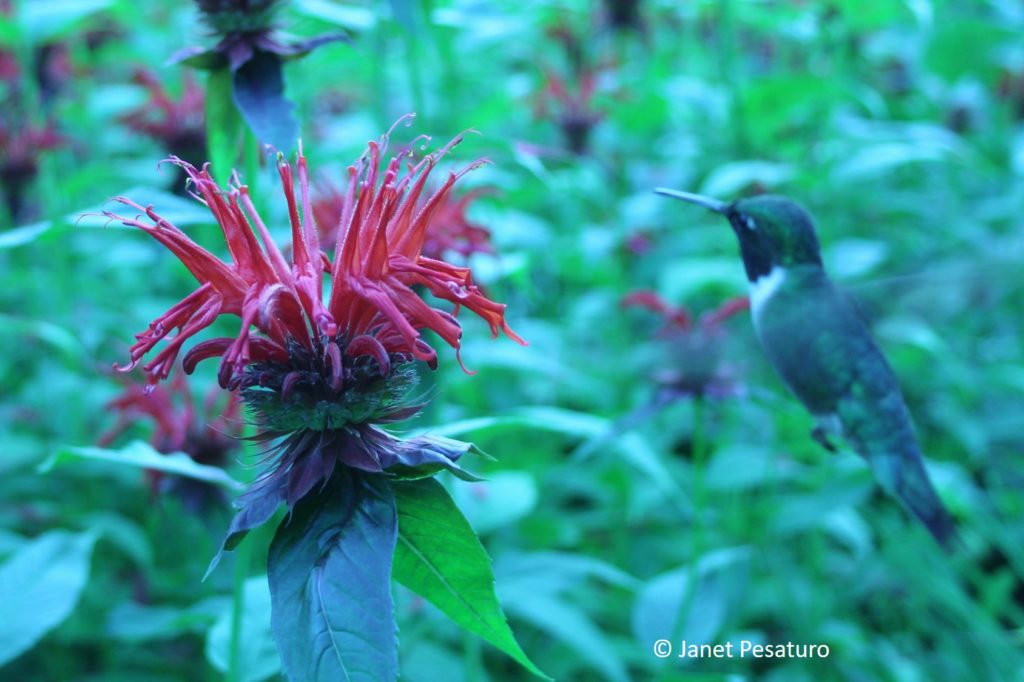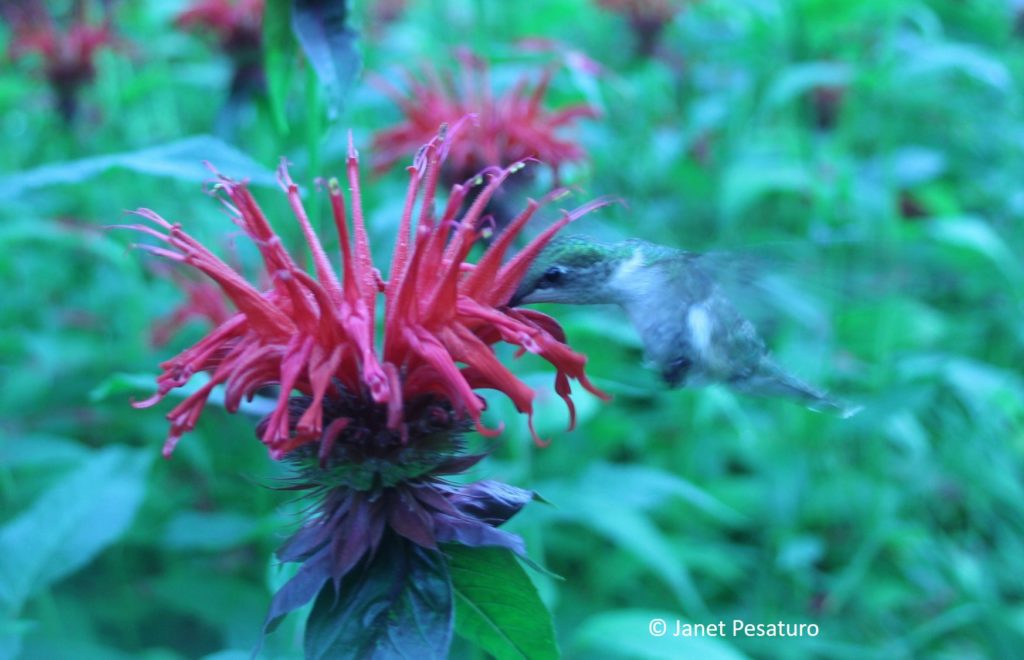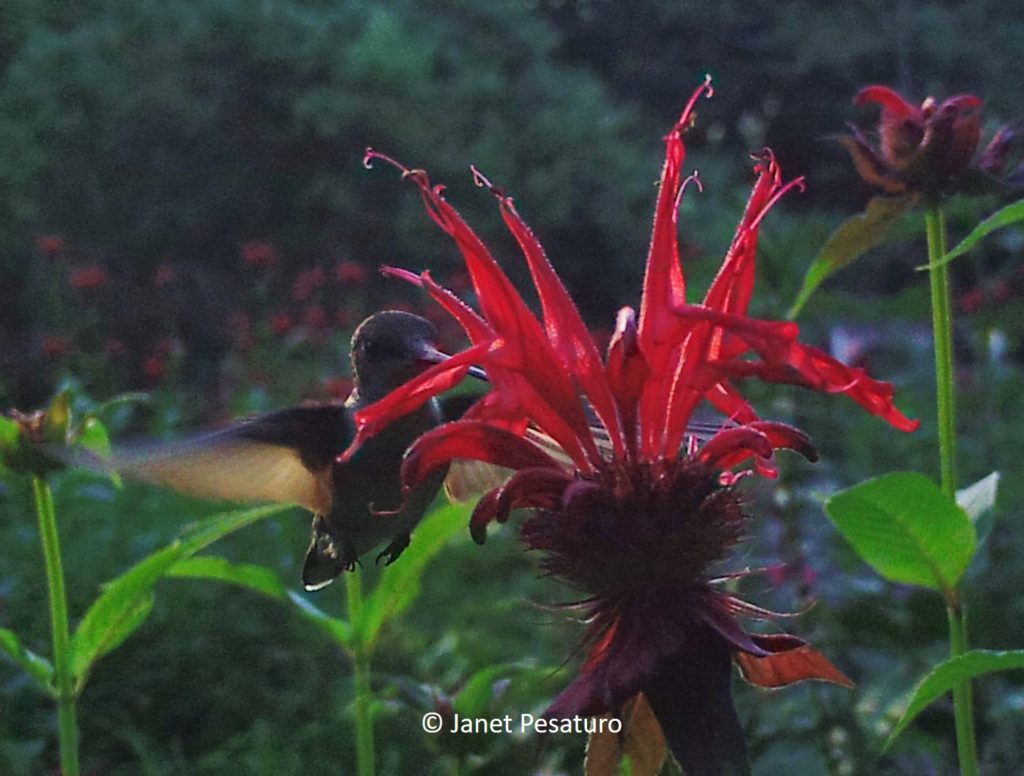Summer Hummer Photo Shoot

Summer hummer photos shoot: Ruby-throated hummingbird captured by Bushnell NatureView Cam Live HD. The bird is in focus, but so is too much of the foliage.
About 2 decades ago we moved into our current house which sat in a wide open 1-acre lot, devoid even of foundation plantings. I loved the empty space because I wanted to fill it with my choice of plantings to attract wildlife. Mammals, birds, butterflies, and bees were all on my mind, but first and foremost was the ruby-throated hummingbird, the only hummer to breed here in the northeastern US. I had never seen one before, but figured I’d plant some of their favorite nectar sources and see what happens. Trumpet vine, bee balm, coral bells, columbine, and penstemon all went in the ground. Sure enough, the tiny winged jewels came to feast. For years it was enough just to watch them, but eventually I took on the challenge of camera trapping them.
First I did some homework and learned that the Camera Trap Codger photographed hummingbirds using a homemade camera trap, a Sony S600 wired to a Pixcontroller universal circuit board. He aimed the camera at his hummingbird feeder, but found that the camera always focused on the background, not the bird. To get it to focus on the bird, he hung black velvet behind the feeder. It worked. He found the wings were a blur in daylight, but in the twilight the flash froze the wings and produced stunning images. You should check them out at that link above – he got some great shots.
His photos of hummingbirds against the black background are dramatic, but look a bit like the bird is in outer space. Beautiful, but I was after a more natural look of an earthly bird at a flower.
I tried my homemade camera trap – a Canon 60D wired to a Snapshot Sniper SSII, and had exactly the same problem the Camera Trap Codger had: The camera simply wouldn’t focus on the tiny bird. I don’t even think the bird was large enough to trigger the camera. The waving flowers and leaves made the camera trigger constantly, and I think the hummingbird captures were merely incidental. Once in a great while, when the bird was in the right spot, it was almost as focused as the flower. But not quite.

Male ruby-throated hummer taken with homemade camera trap

Female ruby-throated hummingbird captured by homemade camera trap.
I also tried my Bushnell Nature Cam HD Live View with one of the two close focus lenses that it comes with. I was pleased to find that hummingbirds do trigger this camera — or at least I got many more bird photos and fewer “false” triggers. It has a fairly large depth of field, which means there’s a good chance of getting the bird in focus, but it also means the foliage just behind or in front of it will also be in focus. So you get a nice shot of the bird, but it tends to be overwhelmed by the vegetation. Overall, I prefer the photos taken with the Bushnell than the fancy homebrew. It even gets some wing definition. The photo at the top of this post was taken with that camera. How do you think it compares to the ones taken with the homemade camera trap?
Here’s another, below, taken with the Bushnell. It wasn’t what I originally had in mind, but it may be my favorite.

This hummer was also captured with the Bushnell. I love the subtle silhouette behind the flower, but most people I’ve shown this to say this pic’s a dud. In the eye of the beholder…

Some great shots Janet! I like the first and last pictures the best. I have been trying to capture pictures of them myself on our hummingbird feeder with home made nectar. I have a decent digital camera but the battery dies so quickly you have to change batteries while missing some great shots. So most of the time I find myself using my iPhone. Ha!
Thanks, Patty! I like the 1st and last pics best too.
Check these hummingbird photos taken by a homebrewed camera trap — http://www.diytrailcams.com/post/last-2-days-8936427?pid=1297965963
Those are fabulous! I especially like the one without a feeder in the photo, scrolling about halfway down. I think bird at feeder pics look much better when the feeder can be cropped out. It’s amazing that he got the bird so well focused, but I will add that getting the bird with a camera trap at a feeder is much easier because the feeder doesn’t wave around wildly in the wind the way flowers do. Also the birds visit a specific feeder port more frequently – sometimes many times a day, so you can target a single port which will usually be in the right place and get many photos of the bird. On the other hand, hummingbirds don’t seem to visit the same flower more than once every few days. I’m guessing that’s because it takes time for the flower to produce more nectar, but I really don’t know. So you have a moving target and few opportunities to get the bird. That was the challenge here.